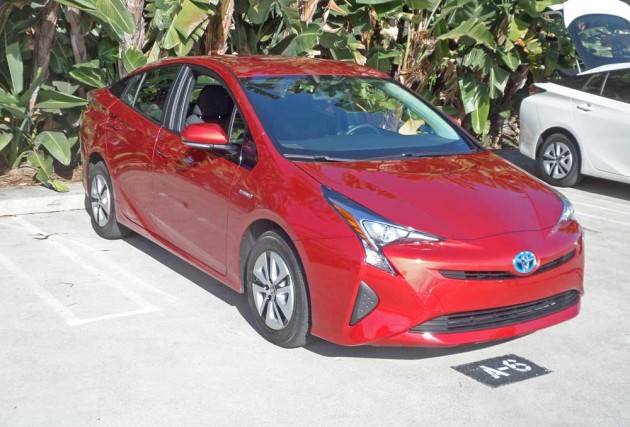?2016 Toyota Prius Two Eco Liftback?
Hybrid Pioneer Rewrites the Rule Book
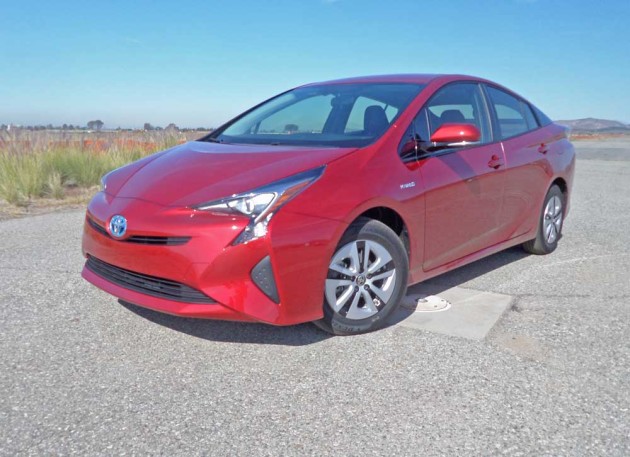
What would happen if a group of automotive journalists gathered together at the same time to test and evaluate a vehicle to see who could achieve the best mileage. The level of competitiveness would be simply amazing. Not only that, but the crazy things that begin to happen in the spirit of competition would tend to truly boggle the mind.
Such a challenge emerged under the guise of a ?Beat the Chief? contest to achieve fuel economy figures that surpassed the mileage accomplishments of Akihiko Otsuka, Chief Engineer responsible for the overall development of Toyota Motor Corporation?s 2010 Prius. Otsukasan managed to glean a mileage rating of 62.9 mpg over a predetermined course in California?s beautiful Napa Valley that took in city driving as well as freeway travel under real world conditions. During the launch program, my driving partner and I managed to record 75.1 and 74.6 mpg ? second and third respectively in the contest between pre-production vehicles (under not-so-real-world conditions). Suffice it to say that all journalists managed to ?Beat the Chief? ? which was a tribute to the new and improved 2010 Toyota Prius Hybrid.
The fourth generation Toyota Prius for 2016 is even better in nearly every way imaginable, moving from pioneer status to that of Hybrid icon. It is a genuine ?Hyper-miler?. The claimed EPA mileage estimates are 58 mpg City, 53 mpg Highway, and 53 mpg combined for the new Prius II Eco, which can be bested with only a minimal amount of effort and focus, but given the way most Prius owners really drive their cars, the actual mileage will probably fall considerably short of the Prius? potential for economy.
The new Prius lineup comes in six levels of trim or grades: Prius Two represents the base level, with a new Prius Two Eco option; followed by the mid-range PriusThree, with a Prius Three Touring option.: and finally, there is a premium grade Prius Four, which also offers a Prius Four Touring option. Each progressive grade from the base model through the Prius Four Touring adds significant features and equipment above the model that precedes it.
The well-equipped entry level Prius Two is for hybrid buyers on a budget, while the Prius Two Eco is for buyers looking for even greater fuel efficiency and an added dose of technology. The Prius Three adds more convenience and technology features, with the Prius Three Touring grade appealing to buyers looking for a more dynamic driving experience. The top-of-the-line Prius Four and the Prius Four Touring is for drivers who want it all. Standard features exclusive to the sporty Touring grades include 17-inch five-spoke alloy wheels with P215/45R17 tires, integrated fog lights, LED clearance lamps, and a unique rear bumper treatment. There are optionally available packages to further outfit vehicles to the consumer?s liking.
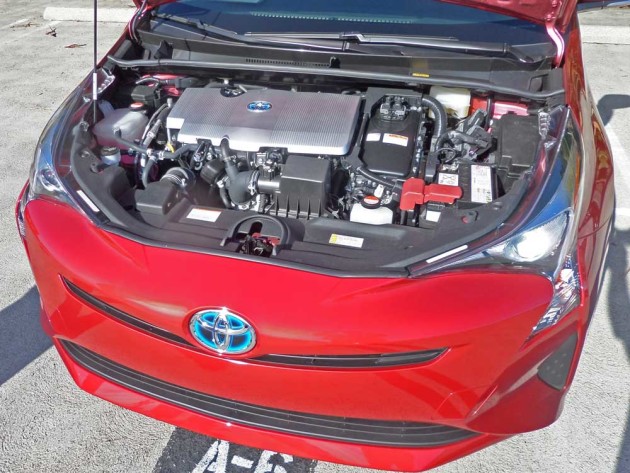
All new Toyota Prius Hybrid models feature the same basic powertrain based on Toyota?s New Global Architecture. The powertrain consists of a 2ZR-FXE 1.8-liter Atkinson Cycle, DOHC, 16-valve VVT-I four-cylinder gas engine, with a Motor Generator Two ? Permanent Magnet Synchronous Electric Motor ? Max Voltage ? DC600V with 71 hp/53 kW and 120 pound feet of torque. The Hybrid Battery Pack – NIckel-Metal Hydride ?DC201.6V (168 x 1.2V cells) or Lithium-Ion ? DC207.2V (56 cells) delivers 95 horsepower at 5,200 rpm along with 105 pound feet of torque at 3,600 rpm. The Hybrid Systems Net horsepower is 121. Engines and motors are mounted up front In a transverse orientation, driving the front wheels through an Electronically Controlled Variable Transmission (ECVT).
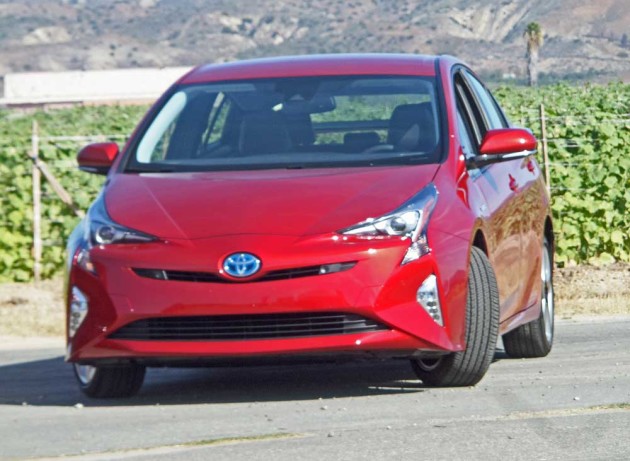
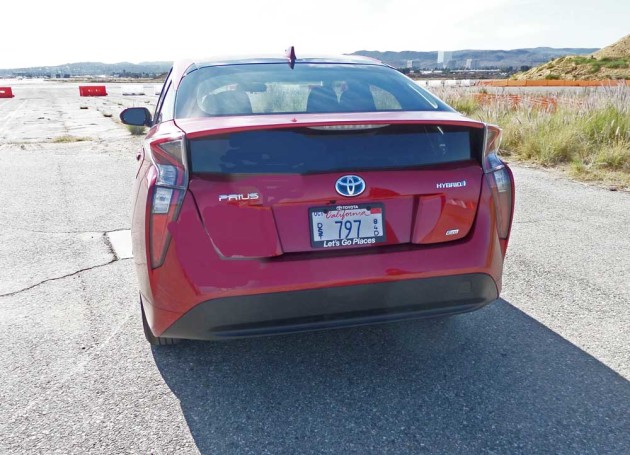
In terms of its exterior appearance, the new Toyota Prius Hybrid still presents a familiar form, but now displays a strikingly dramatic and more emotional design that is considerably more refined, and aerodynamics are improved, with a 0.24 coefficient of drag. In other words, Prius is now longer and wider, and is a really good looking vehicle, with a slippery profile in all of its trim levels.
Bill Fay, group vice president and general manager, Toyota Division, pointed out that ?This Prius will invite new drivers into the category by delivering an impressive look and feel, built on the foundation of safety and eco-consciousness that define the vehicle?s heritage,?
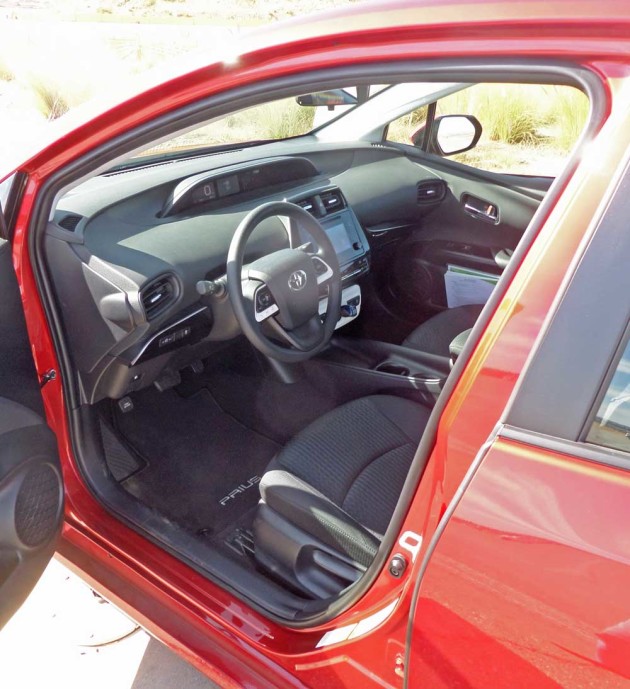
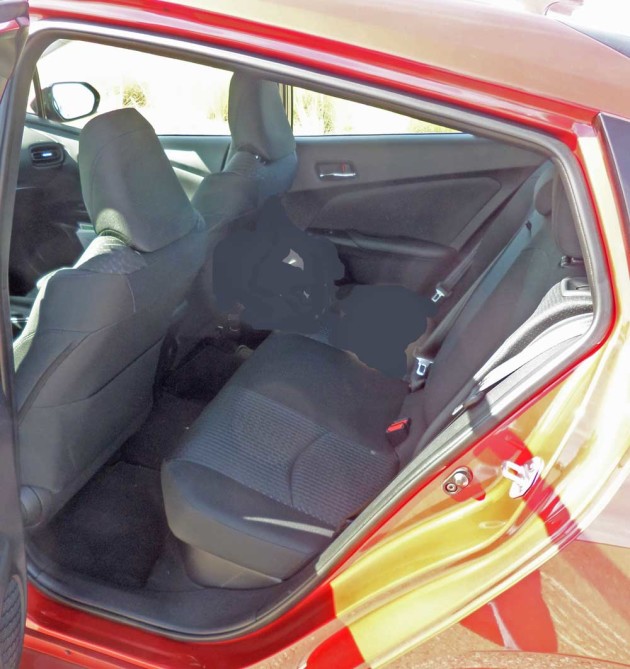
The new Prius delivers a premium interior debuting advanced technology complemented by functional features that are fun and visually appealing. The wrap-around dash design, form-hugging seats, ease of controls and enhanced visibility combine to make this latest iteration Prius a highly engaging automobile. The new interior is much quieter than the previous model, with improved NVH.
Safety is still a high priority, and the 2016 Prius will be among the first U.S.
models to offer Toyota Safety Sense P (TSS (P)), a new multi-feature advanced safety package anchored by automatic pre-collision braking. TSS bundles safety technologies including a Pre-Collision System with Pedestrian Detection; Lane Departure Alert with Steering Assist; Full-Speed Dynamic Radar Cruise Control, and Automatic High Beams.
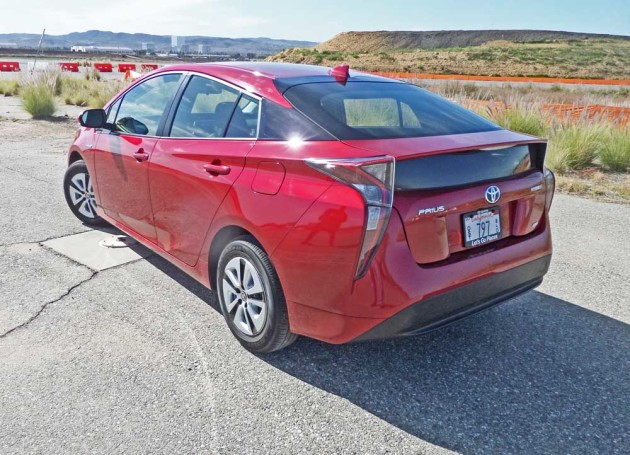
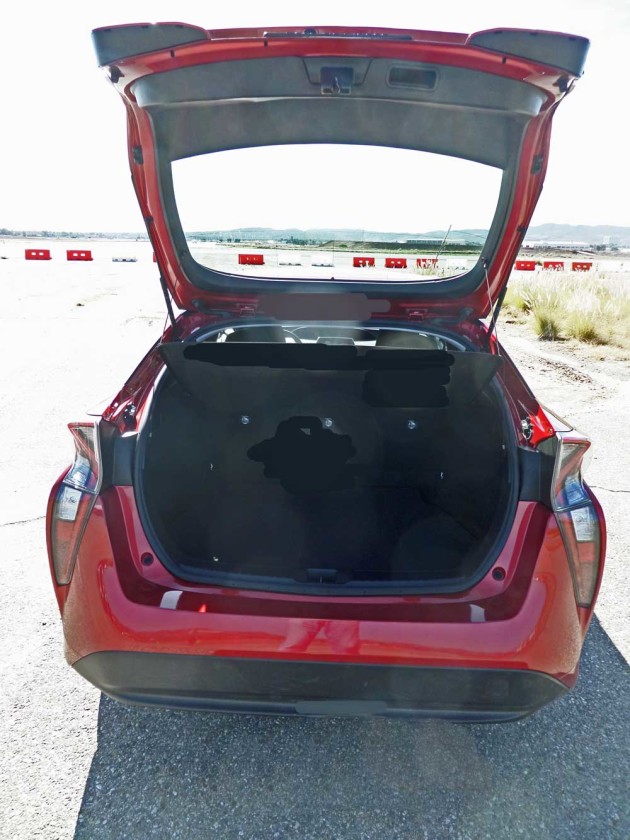
During the national press preview, my driving partner and I spent the most time in the 2016 Toyota Prius Two Eco Liftback. It was finished outside in Hypersonic Red with a Black fabric interior. Its base price was set at $24,700. We also experienced a brief stint in a 2016 Prius Four Touring, with a base price of $30,000. The MSRP for all Prius models does not include the delivery, processing, and handling (DPH) fee of $835. The DPH fee for vehicles distributed by Southeast Toyota (SET) and Gulf States Toyota (GST) may vary. Costs do not reflect available Federal tax credits or state and regional rebates that vary by locale.
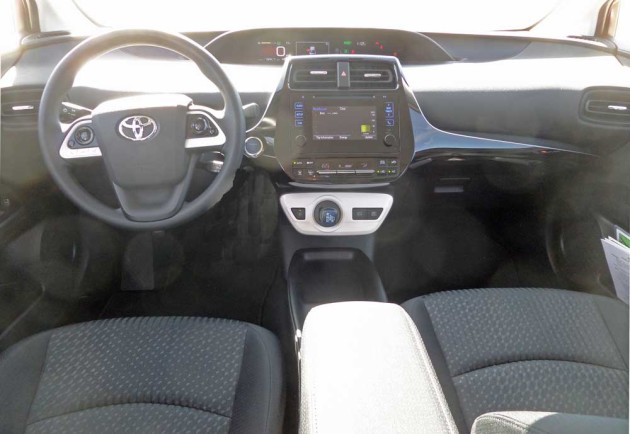
SUMMARY: With this fourth generation Prius, Toyota continues its quest for optimum fuel economy, and by 2020, the goal is to have a hybrid option for every Toyota model. Prius is destined to sell in 80 countries around the globe.
This latest example of Prius development continues to manage the intelligent evolvement to an ever better and more ecologically friendly vehicle, with increased sustainable mobility. The new Prius models perform well on the highway or in the inner city, while delivering a comfortable ride with admirable handling characteristics from the perspective of both genders.
To effectively put the new Prius through its paces and to demonstrate safety technology, three venues were set up at the old El Toro Marine air base in southern California. The first exercise showcased the Pre-Collision System with Pedestrian Detection, the second demonstration focused on handling characteristics and ride quality on a challenging autocross course comparing the 2016 Prius with the 2015 Prius. The third venue allowed experiencing Toyota?s Dynamic Radar Cruise Control (DRCC).
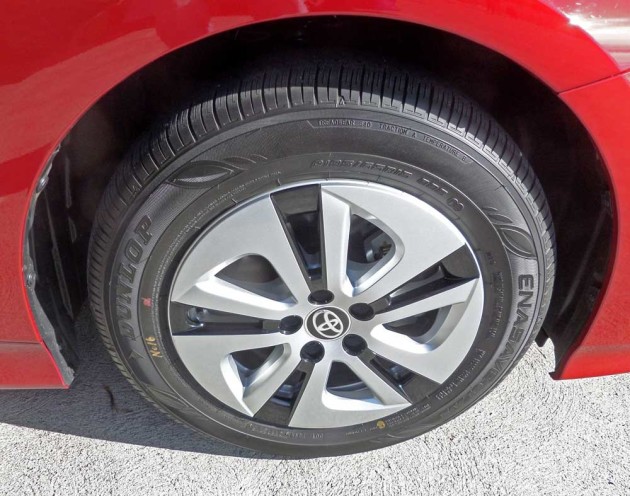
In the final analysis, the 2016 Toyota Prius in its various grades is an attractive and practical Hybrid liftback that exhibits Prius DNA, but in a much more appealing package. It also delivers sportier handling traits, while providing a comfortable and stable ride. The new Prius is also a functional and versatile hybrid vehicle that?s suitable for grocery getting or long haul excursions.
Toyota offers a 36-month/36,000 mile basic new-vehicle warranty that applies to all components other than normal wear and maintenance items. Additional 60-month warranties cover the powertrain for 60,000 miles and against corrosion with no mileage limitation. The hybrid-related components, including the HV battery, battery control module, hybrid control module and inverter with converter, are covered for eight years/100,000 miles. In applicable states hybrid-related component coverage is 15 years/150,000 miles with the exception of the hybrid battery, which is covered for 10 years/150,000 miles. Battery replacement cost averages $2,300 but many existing earlier Prius models have logged 250 to 350 thousand miles.
[wptabs style=”wpui-light” effect=”slide” mode=”horizontal”]
?[wptabtitle] SPECIFICATIONS: 2016 Toyota Prius II Eco Hybrid Liftback [/wptabtitle]
?? [wptabcontent]
| Base Price: | $24,700. |
| Price as Tested: | $25,600. |
| Engine Type and Size: | 2ZR-FXE (Atkinson cycle) (DOHC) 16-valve VVT-i 1.8-Liter 4-cylinder with Motor Generator Two ? Permanent Magnet Synchronous Motor ? Max Voltage ? DC600V with 71 hp/53 kW and 120 pound feet of torque. Hybrid Battery Pack – NIckel-Metal Hydride ?DC201.6V (168 x 1.2V cells) or Lithium-Ion ? DC207.2V (56 cells). |
| Horsepower (bhp): | 95 @ 5,200 rpm / Hybrid System Net HP=121 |
| Torque (ft./ lbs.): | 105 @ 3,600 rpm |
| Transmission: | Electronically Controlled Variable Transmission (ECVT). |
| Drive Train: | Transversely mounted front engine and motor ? Front-Wheel drive. |
| Suspension: |
Front – Independent MacPherson strut suspension with stabilizer bar Rear – Double wishbone with stabilizer bar |
| Brakes: | Hydraulic power-assisted four-wheel discs (vented front) with ABS and integrated regenerative brake system. |
| Tires: | Dunlop Enasave 01 P195/65 R15 89S All season mounted on 5-stylized-spoke/hole alloy wheels. |
| Wheelbase: | 106.3 inches |
| Length Overall: | 178.7 inches |
| Width: | 69.3 inches |
| Height: | 58.1 inches |
| Curb Weight: | 3,010 lbs. |
| Fuel Capacity: | 11.3 gallons |
| EPA Mileage Estimates: | 58-mpg city / 53-mpg highway |
| Drag Coefficient: | 0.24 |
| 0 – 60 mph: | Not tested. |
?? [/wptabcontent]
[/wptabs]
 Arv Voss is a Northern California based freelance motoring Journalist and member and past officer of several noted Automotive Journalist organizations who contributes regularly to a number of national and international media outlets. He reviews not only cars, trucks and SUVs, but motorcycles and unusual wheeled vehicles as well.
Arv Voss is a Northern California based freelance motoring Journalist and member and past officer of several noted Automotive Journalist organizations who contributes regularly to a number of national and international media outlets. He reviews not only cars, trucks and SUVs, but motorcycles and unusual wheeled vehicles as well.

